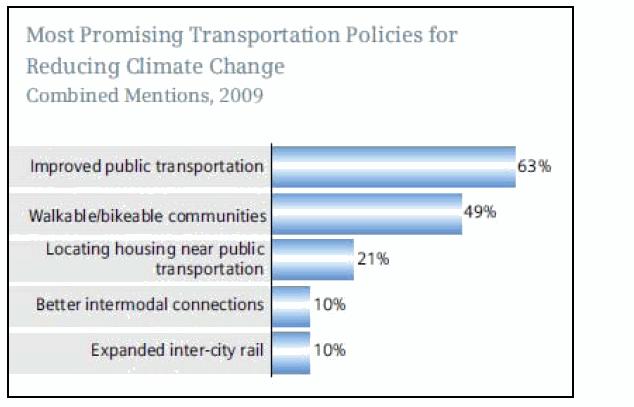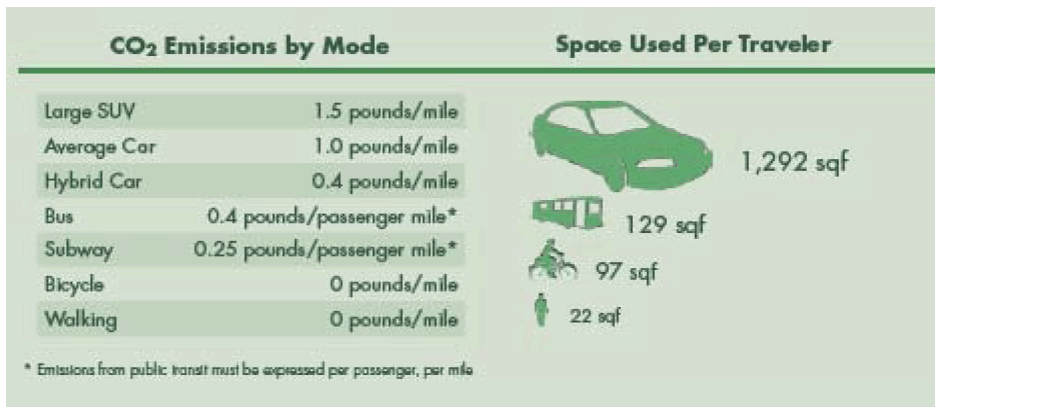LEAGUE OF AMERICAN BICYCLISTS
EXECUTIVE SUMMARY
Climate Action Plans are strategic and comprehensive tools to combat climate change by reducing Green House Gas (GHG) emissions. They are being written and implemented by cities, states, and universities in lieu of aggressive federal action. Bicycling is a convenient, enjoyable, and efficient way to make short trips – 40 percent of all trips in the United States are two miles or less – and it does not emit CO2. As a result, policymakers are increasingly turning to promoting bicycling as a way to meet GHG reduction targets.
Bicycling advocates can help shape Climate Action Plans to include pro‐bicycling policies. Using case studies and examples from existing plans, this report examines: 1. how pro‐bicycling policies have been written into the Climate Action Plans of states, cities, and universities, 2. examples of plans that include bicycling, 3. how bicycling advocates can best support these efforts, and 4. how to ensure that governments follow through on the promises made in their plans.
Experienced advocates and climate planning experts recommend that advocates follow these steps:
- The process – Know what the public input process is; offer your advice as an expert
- The people – Know who is writing the plan; build relationships with the officials
- The plan – Contribute ideas, especially existing, well thought‐out ones with quantifiable results
- The public – Conduct outreach and build support for the plan
- The product – Use the plan to make things happen; integrate the plan into the operating culture of the agency
Bicycling language in Climate Action Plans varies, but here are some key points to advocate for:
- VMT and GHG reduction targets – plans should identify vehicle miles traveled (VMT) reduction targets to reach GHG reduction targets. They can also include ambitious bicycle mode‐share targets.
- Complete the network – plans should call for the prompt completion of the Bicycle Master Plan, if one exists, or the creation and implementation of one, if not. Improvements to inadequate plans should also be called for.
- Funding – plans should include increased funding bicycle and pedestrian infrastructure.
- Design practices – plans should call for Complete Streets policies that require the consideration of the needs of all users, and Smart Growth policies that encourage high‐density and multi‐modal land‐use planning. Some plans include incentives or requirements for new buildings to provide showers and changing facilities and secure bicycle parking.
Download full report: Climate Change and Bicycling
About League of American Bicyclists
www.bikeleague.org
“The League began as the League of American Wheelmen (LAW) in 1880, and was responsible for defending the rights of cyclists from its start. The League of American Wheelmen is credited with getting paved roads in this country before the reign of the automobile.”
Tags: Add new tag, Bicycling, Bike Lanes, Chicago, Climate Action Plan, CO2, Cycling, D.C., GHG Emissions, IL, Illinois, League of American Bicyclists, Washington








 RSS Feed
RSS Feed